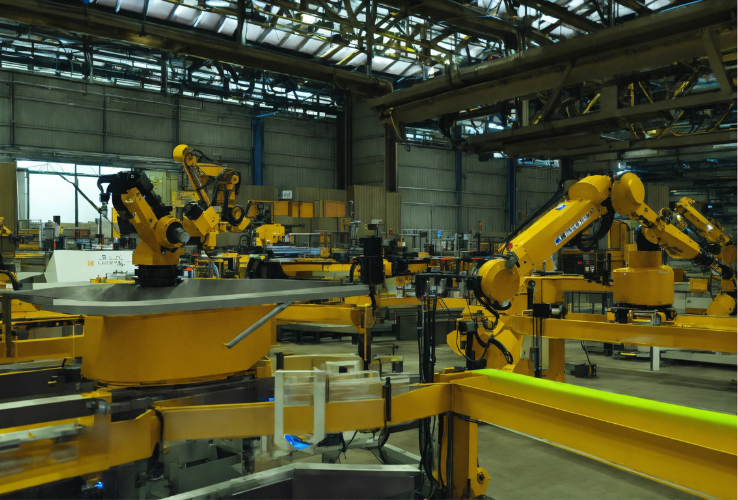Smart Manufacturing: IoT’s Role in Shaping Intelligent Ecosystems
In the ever-evolving landscape of manufacturing, factories have emerged as dynamic, interconnected ecosystems. This transformation owes much to the Internet of Things (IoT), a technology that is not just a catalyst for change but a cornerstone of modern manufacturing’s future. IoT devices are the veins and arteries of this ecosystem, transmitting streams of data that empower manufacturers to make precise, informed decisions. From predictive maintenance to process optimization, IoT is revolutionizing how factories operate, boosting efficiency, and reducing downtime.

Addressing Modern Manufacturing Challenges
Traditional manufacturing models often suffer from inefficiencies that arise from siloed operations, unexpected machine failures, and delayed responses to issues. In an industry where time and precision directly impact profitability, these challenges can lead to significant losses. The need for a proactive, data-driven approach has never been more critical.
IoT addresses these challenges by breaking down silos, enabling devices to communicate across the factory floor and beyond. This interconnectedness ensures that every stakeholder—from operations managers to supply chain coordinators—has access to real-time insights. For instance, instead of reacting to a machine breakdown, manufacturers can predict and prevent it, thanks to IoT-enabled predictive maintenance systems.
Transforming Factories into Intelligent Ecosystems
1. Real-Time Monitoring
IoT devices continuously collect data from machines and processes, providing a real-time overview of factory operations. This transparency allows manufacturers to identify bottlenecks, inefficiencies, and anomalies as they occur. For example, temperature sensors in a pharmaceutical production line can ensure that products remain within strict regulatory guidelines, avoiding costly recalls.
2. Predictive Maintenance
Unplanned downtime is a significant cost driver in manufacturing. IoT-enabled predictive maintenance uses sensors to monitor the health of machinery, analyzing vibration, temperature, and other factors to predict failures before they happen. This approach not only extends the lifespan of equipment but also optimizes maintenance schedules, ensuring minimal disruption to production.
3. Process Optimization
With IoT, factories can achieve unprecedented levels of efficiency. Data from connected devices feeds into advanced analytics systems, identifying opportunities for process improvements. Whether it’s reducing energy consumption or optimizing assembly line speeds, IoT empowers manufacturers to fine-tune operations to perfection.
Real-World Applications: Connected Factories and Digital Twins
One of the most compelling examples of IoT’s impact is the rise of connected factories. In these environments, every machine and system is integrated into a unified network. Consider an automotive manufacturing plant where IoT devices monitor everything from raw material inventory to assembly line performance. If a delay occurs at one station, the system automatically adjusts schedules downstream, minimizing disruptions.
Digital twins further enhance this ecosystem by creating virtual replicas of physical assets. These models use IoT data to simulate real-world conditions, enabling manufacturers to test scenarios, optimize performance, and predict outcomes without impacting actual operations. For instance, a digital twin of a wind turbine can help engineers identify the optimal maintenance schedule, reducing downtime and increasing efficiency.

Looking Ahead: The Strategic Edge of IoT in Manufacturing
The integration of IoT in manufacturing is not just a technological shift; it’s a strategic imperative. As global competition intensifies, the ability to harness data for actionable insights will separate leaders from laggards. IoT not only improves operational efficiency but also enhances agility, allowing manufacturers to adapt to changing market demands swiftly.
Moreover, IoT lays the foundation for Industry 4.0’s broader vision, encompassing artificial intelligence, robotics, and blockchain. By investing in IoT today, manufacturers are not just solving current challenges but positioning themselves for the future of intelligent, autonomous factories.




